About the project
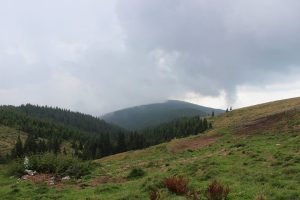 Romania features a high number of commons spread across the Carpathian Mountain range. Commons are woodlands and grasslands owned and governed mostly by communities, which can be territorial villages, kinship-groups or groups of descendants. And while the territorial villages are clearly groups of people living together in a certain bounded area, the kinship-groups and groups of descendants are rather more diffuse. Membership in such communities of rightholders is defined differently, according to various historical developments in the different provinces. The most notable difference is between 1) place-based systems of equal rights and 2) inheritance-based systems of unequal rights.
Romania features a high number of commons spread across the Carpathian Mountain range. Commons are woodlands and grasslands owned and governed mostly by communities, which can be territorial villages, kinship-groups or groups of descendants. And while the territorial villages are clearly groups of people living together in a certain bounded area, the kinship-groups and groups of descendants are rather more diffuse. Membership in such communities of rightholders is defined differently, according to various historical developments in the different provinces. The most notable difference is between 1) place-based systems of equal rights and 2) inheritance-based systems of unequal rights.
All commons as a category of property regime are called in Romania ‘traditional or historical associative forms’, forme asociative traditionale sau istorice, referred to in local language mainly as obște (pl. obști), composesorat (pl. composesorate) and asociație urbarială (pl. asociații urbariale). From a legal point of view, they are considered land in private property of ‘juridical persons’.
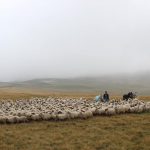 What did our project do? The extensive research of contemporary Romanian land commons is unprecedented. Our database includes 329 surveyed cases of commons. We collected data from 20% of the existing number of commons in Romania, accounting for nearly 1/2 of the forests owned by the commons and nearly 1/3 of the surface of pasture owned.
What did our project do? The extensive research of contemporary Romanian land commons is unprecedented. Our database includes 329 surveyed cases of commons. We collected data from 20% of the existing number of commons in Romania, accounting for nearly 1/2 of the forests owned by the commons and nearly 1/3 of the surface of pasture owned.
More information here.
Research Team
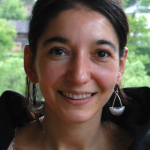 MONICA VASILE
MONICA VASILE
Project Director, member of the Solidarity Lab
Monica is an environmental anthropologist. She has conducted extensive etnographic fieldwork and sociological surveys in the Carpathian Mountains of Romania. Her research topics are land commons, forests, pastoral practices, timber logging and trade, human-animal relations, nature conservation and rewilding. Currently she is affiliated with the Rachel Carson Center for Environment and Society, Munich, Germany.
monica.vasile01@gmail.com; www.researchgate.net/profile/Monica_Vasile4
 IRINA OPINCARU
IRINA OPINCARU
Researcher, member of the Solidarity Lab
Irina is a sociologist, a PhD student at the Doctoral School of Sociology at the University of Bucharest, Romania. She has ample research experience, both academic and applied, in the areas of cooperative practice, social economy and financial exclusion.
 GEORGE IORDACHESCU
GEORGE IORDACHESCU
Researcher
George is a social anthropologist interested in political ecology and construction&protection of natural heritage. The title of his PhD research at IMT Lucca, Italy, is “Wilderness Production and Protection in Eastern Europe: Towards a synthesized critique of neoliberal conservation and its impact on forest livelihoods.”
george.iordachescu@gmail.com; www.imtlucca.it/george.iordachescu
 STEFAN VOICU
STEFAN VOICU
Researcher
Stefan is a PhD student in Sociology and Social Anthropology at the Central European University, Budapest, Hungary. His research examines the interplay of power, capital and environment in the Carpathian forest commons, and the cash crop farms of South-Eastern Romania.
voicu_stefan@phd.ceu.edu
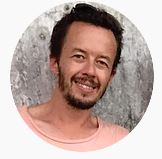 ARRYN SNOWBALL
ARRYN SNOWBALL
Fieldwork Assistant
Arryn is a visual artist. He has a Doctorate of Visual Arts from the Queensland College of Art, Australia, where he taught painting from 2005-2012. He has held solo exhibitions in Brisbane, Sydney, Canberra and Melbourne. He contributes to our project with photography and editing of visual and written content.
www.arrynsnowball.com
Research Methods
1. Social Mapping of the Romanian Commons
Method: interviews with commons representatives – survey of 330 commons
The project aimed at describing the large variety of commons to be found across the Romanian Carpathians, investigating the following dimensions:
- Normative frameworks: ways of regulation of the commons, state laws and institutions, customary rules, and instruments of organizing access, monitoring and management
- Local practices: associated with new forms of governance and use of the commons
- Relation to the environment; practices of logging, pasturing, narratives of forests and pastures
2. Multi-sited Ethnography / Understanding the relation between commons and local livelihoods
Method: case-studies in selected locations: counties Gorj, Vâlcea, Argeș, Maramureș, Harghita, Vrancea
In each location in-depth interviews with over 20 commons members, key actors and commoners.
3. Documents Analysis / Archival research
- collecting and analyzing forestry maps, cadastral maps, members registers, budgets, regulatory statutes
- archival research in the National State Archives of Hunedoara county
4. Photographic Recording / Image Archive of the Commons
- creating a photographic archive of contemporary commons, by photographing persons related to commons governance, commoners, commons’ assets and resources, events related to the commons, general assemblies
More information here.
Findings and Data
 How many. How much. From our research in the present project, by piecing together information from different sources, it can be said that there are around 1500 forest and pasture commons located in the Romanian Carpathian Mountains and along the foothills, counting 873.000 ha of forest, 14% of the total forested surface of the country. This official figure is presented for ‘traditional associative forms’ by the Romanian Court of Accounts in a report from 2014; other sources indicate other figures, such as 788.694 ha (year 2015), source official report filed by the Ministry of Forest and Waters. In addition, our estimations show that the commons have about 300.000 ha of pasture. The resources are owned and managed by over 400.000 commoners.
How many. How much. From our research in the present project, by piecing together information from different sources, it can be said that there are around 1500 forest and pasture commons located in the Romanian Carpathian Mountains and along the foothills, counting 873.000 ha of forest, 14% of the total forested surface of the country. This official figure is presented for ‘traditional associative forms’ by the Romanian Court of Accounts in a report from 2014; other sources indicate other figures, such as 788.694 ha (year 2015), source official report filed by the Ministry of Forest and Waters. In addition, our estimations show that the commons have about 300.000 ha of pasture. The resources are owned and managed by over 400.000 commoners.
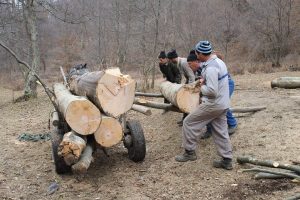 Benefits from the commons. Commoners perceive their primary uses of the commons to be firewood, grazing and liquid proceeds from commercial leases and enterprises. From the commons, firewood is extracted and distributed towards commoners, for heating and cooking, for which there are no local alternatives so far. In some areas, the common property institutions are oriented mostly towards providing individual revenues and cash dividends derived from commercial logging and subsidies. Research findings suggest that the individual revenue derived from liquid proceeds made on the commons are, on average, not significantly high for households, they do not constitute a primary source of livelihood, but an additional income. Commoners can also graze animals for free and receive a quota of firewood at half price.
Benefits from the commons. Commoners perceive their primary uses of the commons to be firewood, grazing and liquid proceeds from commercial leases and enterprises. From the commons, firewood is extracted and distributed towards commoners, for heating and cooking, for which there are no local alternatives so far. In some areas, the common property institutions are oriented mostly towards providing individual revenues and cash dividends derived from commercial logging and subsidies. Research findings suggest that the individual revenue derived from liquid proceeds made on the commons are, on average, not significantly high for households, they do not constitute a primary source of livelihood, but an additional income. Commoners can also graze animals for free and receive a quota of firewood at half price.
In many cases, the commons provide collective community welfare, especially so in the Eastern area of Vrancea, and the eastern Transylvanian counties (Harghita and Covasna). Here they contribute to reparations of infrastructure, public buildings, schools, and roads. Churches are often sponsored, as they are important community buildings, in which the commoners take a lot of pride and wish to invest. They also offer stipends for students, supporting education, mostly in the Transylvanian eastern areas. Traditionally in these areas, the commons (composesorate in Harghita county) sponsor local groups of musicians, football teams and other youth activities.
Governance. The commoners elect a commons council (consiliu), usually formed of five members, and, among the members of the council, a president. They also elect an auditing committee (comisia de cenzori), formed of three members. Councils are temporary (2 to 5 years). The normative framework is provided by the local bylaws, a document containing rules and regulations legally approved and upheld. Theoretically, the bylaws can be modified at any time, provided that the general assembly of commoners ratifies the changes. However, in practice this is difficult to achieve because there is usually a threshold of participation of 2/3 of members to uphold the changes, which can almost never be met. Most decisions regarding the commons are expected to be taken by the assembly of commoners.
More information here.
Institutional Hosts
- Solidarity Lab, Bucharest (from 2018)
- Institute of Sociology, Romanian Academy, Bucharest (2015-2017)
- IRITHESys, Humboldt University, Berlin (2015-2016)
- Rachel Carson Center, LMU, Munich (2017-2019)
- Financing (2015-2017): Romanian National Authority for Scientific Research and Innovation, CNCS-UEFISCDI, Project number PN-II-RU-TE-2014-4-2865
